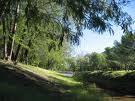Salto, Buenos Aires Province, Argentina
Suggest Place to Visit
952
Track to location with GPS |
 |
Despite the fact that according to some documents, land was distributed in this area in 1637, there is no exact knowledge of the founding date of Salto.
As a result of the inveterate defense of the original people against usurpation, Captain Juan de San Martín carried out an incursion against the Indians and established, at the end of 1737, ´´The Advanced Guard of the Jump´´, which he arrived in 1752 the Blandengues Company in salary ´´La Invencible´´.
On September 7, 1759, the Council of the Indies issued the Royal Decree by which it orders the Government of Buenos Aires to agree with the Cabildo for everything related to the new population. The foundation was not realized.
In 1772, Governor Juan José de Vértiz reported that the Soldiers' Companies remained in place. A report issued in 1782 by the Border Commander says that the San Antonio de Salto Advanced Guard has 493 inhabitants without counting the soldiers. Salto has been a party since January 2, 1826, but officially it has been since October 17, 1854, when the Municipalities Law was enacted.
Salto has always been a farming town.
Salto is an important agricultural town in the northwest of the province of Buenos Aires, capital of the homonymous party. It is located 200 km from Buenos Aires and by RP 32, 55 from Pergamino. Its name would come from a jump from the Arroyo Saladillo Chico, on whose banks the first town was located.
Salto has become one of the spa cities in the north of the province of Buenos Aires most chosen by weekend tourism throughout the year. This town, characterized by its tranquility and the warmth of its people, offers those who visit it a good quality of services in terms of restaurants, confectioneries, shops, banks, hotels, camping and family houses that provide accommodation.
It has 23,816 inhabitants (INDEC, 2001), which represents an increase of 13.6% compared to the 20,949 inhabitants (INDEC, 1991) of the previous census.
Museum ´´Rincón de Historia´´, on the corner of Buenos Aires and Maipú, houses a very important amount of elements and documents from the history of Salto and its pioneers. With excellently distributed material, the visitor appreciates all the exhibited pieces with their corresponding explanation
Museum of Paleontology, on Av. España next to Parque de la Madre, has an important variety of fossil remains found in this city; vertebrates from Argentina and South America, found in Salto. They belong to the Cenozoic Era, the late Pleistocene period of Argentina. There are several complete skeletons of the genera Scelidotherium, Megatherrium, Glossotherium, Lestodon, Gliptodon carapace, Panochthus carapace. In the 2nd room there are three skeletons on display: the Smilodon or ´´saber tooth tiger´´, Lama Gracilis, the only complete specimen in the world, Eutatus Seguini, the only specimen in the country
Museum of Tango ´´Roberto Firpo´´. Created by the concerns of Aníbal Marzano, who loves our things, a student of tango, it is a place visited from different parts of the country and by students from schools and colleges.
Balneario: municipal tourist complex, built on both banks of the Salto River. It has all the necessary amenities: three pools, a beach area with umbrellas, chairs and chairs, toilets, showers, tables, benches, grills, grocery stores, parking, electric light, first aid room and lifeguard service. All this infrastructure, added to the green of the trees (paradises, eucalyptus and pine trees) make this complex an excellent place for recreation and rest.
Municipal Camping: located within the Spa Complex, an area of 4 wooded hectares, capacity for 250 tents or mobile homes and offers the comforts of: sanitary services, hot water 24 hours a day, covered dishwasher, ironing room, grocery store, general lighting , unit outlets, grills, tables, benches, public phone and storm shelters.
Cycling Track: it is one of the best cycling tracks in the country. Inaugurated on May 24, 1997 and thanks to the support of provincial and local authorities, it is a source of pride for the 30,000 inhabitants of this seaside resort.
Salto de Agua: land where the first fort was established, declared a National Historic Site. In 2002, at the initiative of citizens of Salto, the Salto de Agua was rebuilt like the original. It is located opposite the ruins of the Quemado Mill, and can be reached by following the dirt road that continues on Avenida España.
Pancho Sierra: son of Don Francisco Sierra and Doña Raimunda Ulloa, he was born on April 21, 1831. Saint, Doctor or Healer have been some of the terms that have been used to define his ability to be interested in the ills of others and give health to rich and poor, local people and those reached from great distances. His grave is preserved in the local cemetery, which is visited annually by thousands of faithful. Very close to this area is the place that was his home, which was converted into a sanctuary and a place to acquire souvenirs.
Comments
We don´t have yet any comments about:
Argentine Salto
Argentine Salto
Be the first to leave a comment as it is very important to inform other people
Outros locais a visitar
Within a radius of 20 km from:Argentine Salto
Salto argentino |
| 0,0 Km |
 |
Hotel reservation near Argentine Salto within a radius of 20 km
No results
Why to book with TURISMO & VIAGENS
The best prices
Our partnerships with the world´s largest operators offer research on the best market prices.
More options
At Rotas Turisticos you can book the hotel, buy the air ticket, book the transfer from the airport to the hotel and vice versa, book the local excursions, rent the car, take travel insurance and consult the places to visit and where to go.
Holiday Tips & Destinations
Hundreds of holiday destinations with all the options that allow you to easily choose the destination that best suits your dream vacation.
TURISMO & VIAGENS
Links





